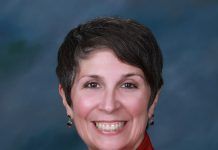San Diego County’s Local Agency Formation Commission will begin the process of making the San Diego County Regional Fire Authority a separate fire protection district.
An 8-0 LAFCO board vote May 4 approved a sphere of influence update for County Service Area No. 135 including support for a recommendation that the SDCRFA be separated from the San Diego County Regional Communications System.
“CSA 135 merits reorganization to split the district into two distinct entities,” said LAFCO executive officer Keene Simonds.
“We’ve given direction for the county to come back with an application and we’re incentivizing that application by waiving the fee,” Simonds said. “We will work as quickly as possible in processing it.”
The San Diego County Board of Supervisors and LAFCO created the San Diego County Regional Fire Authority in 2008. CSA No. 135 covers the entire unincorporated area of the county as well as several incorporated cities who have joined the 800 MHz communications system which allows emergency and public safety agencies to communicate with one another. The 2008 decision to authorize latent powers for fire protection and emergency medical services within a zone of CSA No. 135 allowed the SDCRFA to be created without the process of forming a new district.
“What they did in ‘08 made sense at the time,” Simonds said.
The creation brought territory not within the boundaries of a public agency but served by a volunteer fire department into the San Diego County Regional Fire Authority. In 2011 five county service areas responsible for fire protection and emergency medical services were consolidated into the SDCRFA.
The first fire protection districts to be dissolved and added to the SDCRFA boundaries were the Pine Valley and San Diego Rural districts, whose addition to the SDCRFA was approved in 2015. The Julian-Cuyamaca Fire Protection District board supported a consolidation and despite some public opposition that area became part of the SDCRFA in 2019. Last year’s actions also included removing the fire protection and emergency medical services latent powers from the Mootamai, Pauma, and Yuima water districts in Pauma Valley and making those areas part of the SDCRFA.
“This has been a twelve-year process,” Simonds said.
A sphere of influence study determines the boundaries best served by a particular agency. It is a prerequisite to any jurisdictional change other than an annexation of land within the existing sphere of influence, and LAFCO also conducts periodic sphere of influence updates for all cities and special districts. The sphere of influence study for CSA No. 135 was based on the periodic update calendar rather than on any annexation proposal.
“I think the fire protection district model is a good and appropriate next step,” Simonds said.
“It’s like the Fire Authority growing up and finally becoming of age,” said county supervisor Dianne Jacob, who is also the chair of the LAFCO board.
A fire protection district may include portions or even the entirety of an incorporated city, so if a city wishes to contract with the SDCRFA the regional agency could provide the coverage.
“The Fire Authority stands in strong support of the motion in front of you,” said SDCRFA fire chief Tony Mecham.
An application to consolidate into the SDCRFA would need support from the fire department’s board as well as the county. “Any decision to join the Fire Authority is a joint application of both parties,” Mecham said. “There is no takeover.”
The Board of Supervisors would be the governing body for the SDCRFA as well as for CSA No. 135. A county service area can have an advisory board with local residents (or first responders), and as part of the consolidation process for the Pine Valley and San Diego Rural districts the Board of Supervisors created the CSA No. 135 Fire Advisory Board in October 2014.
The process to create a separate district for the SDCRFA will begin with Board of Supervisors approval. LAFCO staff will then conduct an analysis including public outreach before docketing the proposal for a LAFCO board meeting.
“I don’t think at this point there will be any significant hiccups in that process,” Simonds said.














